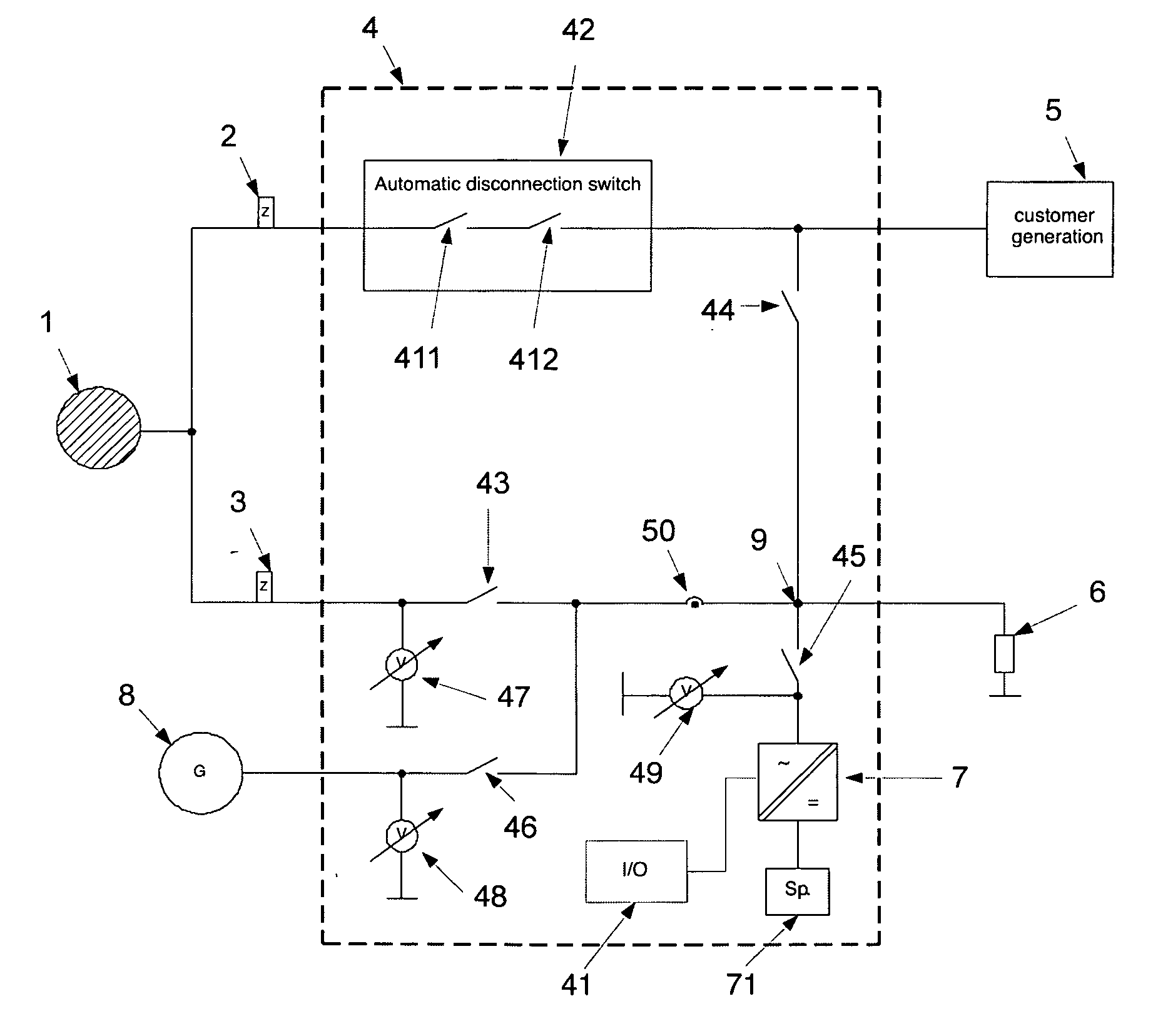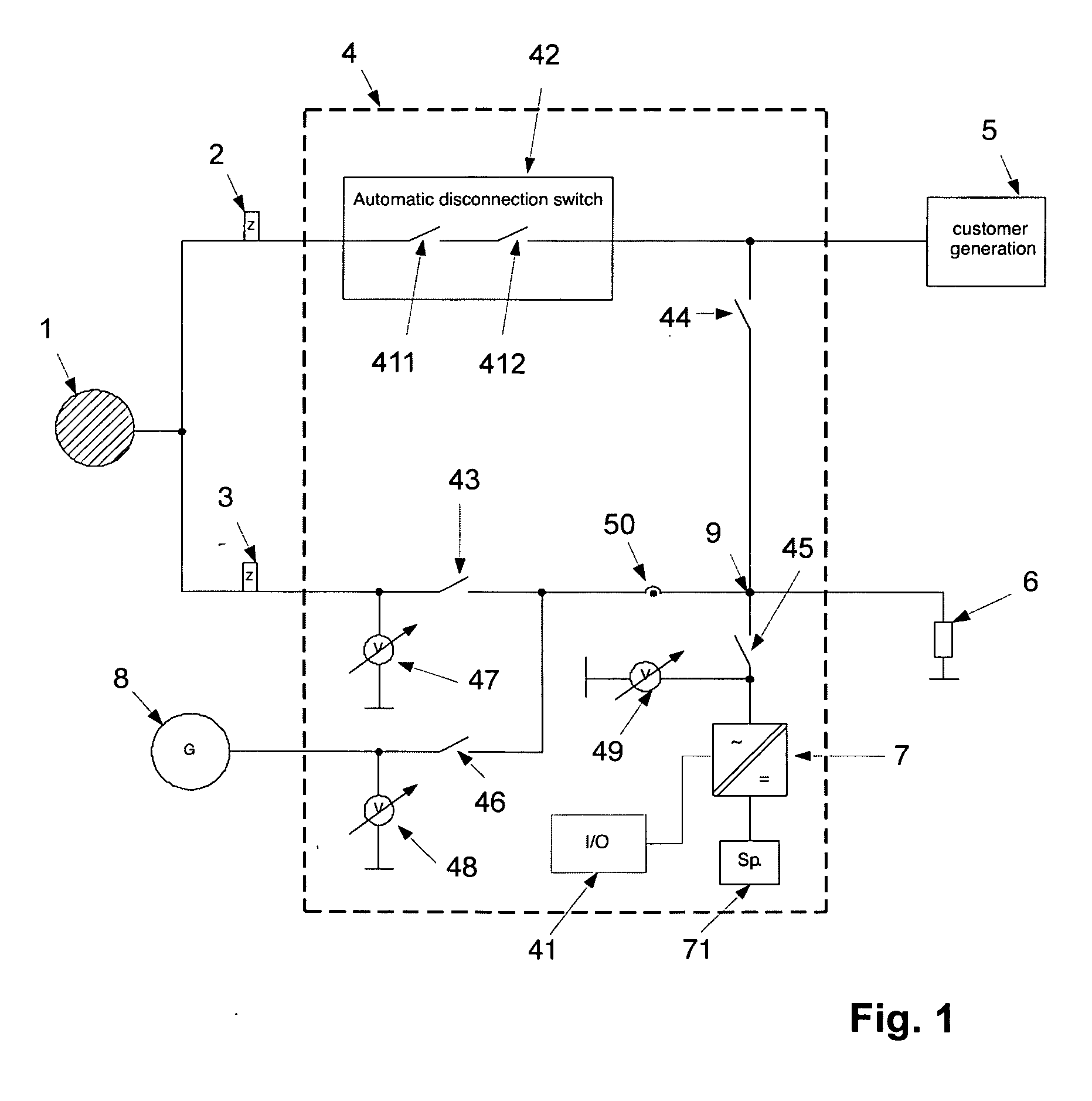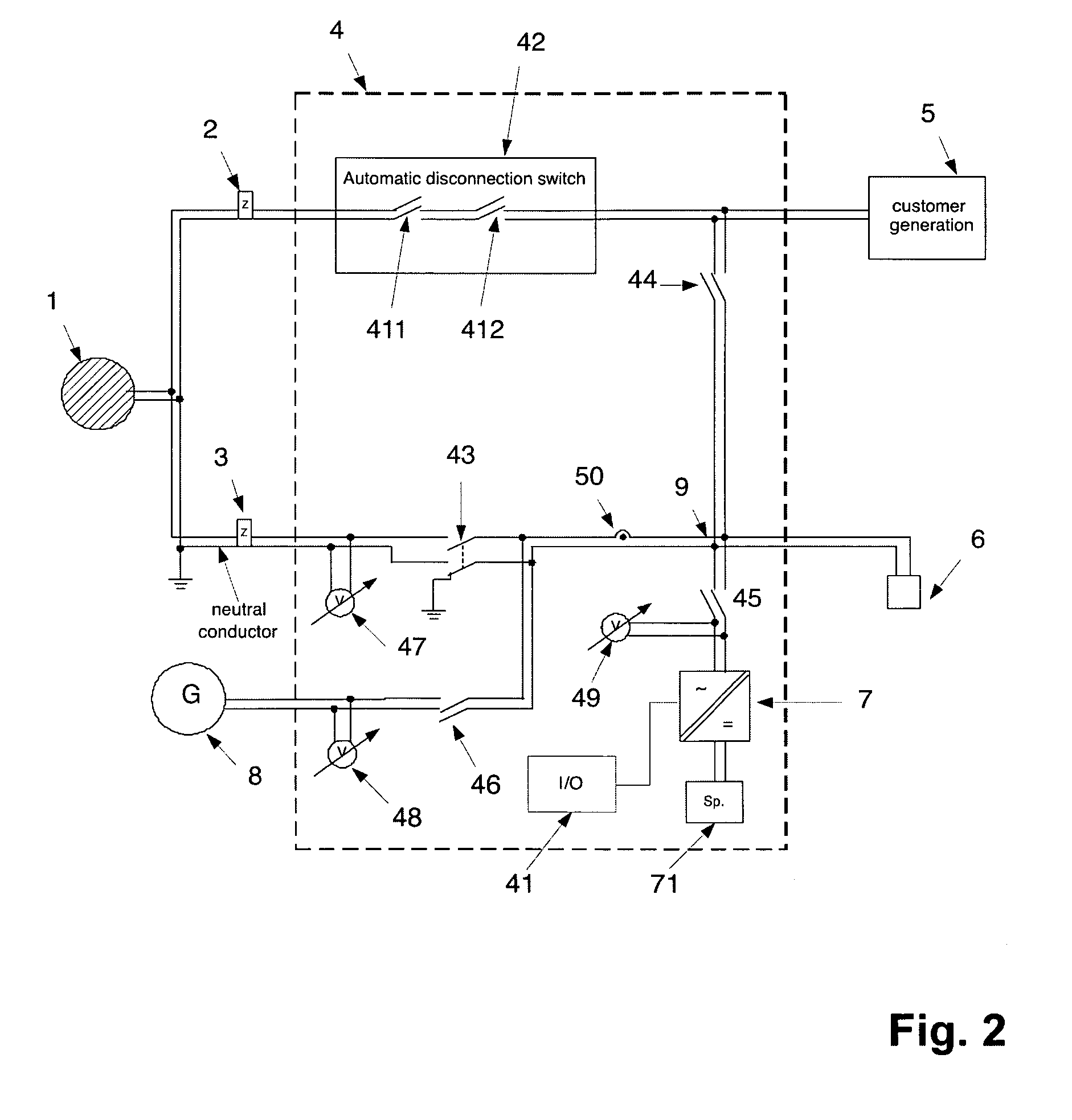Backup power system
a power system and back-up technology, applied in the direction of emergency power supply arrangements, transportation and packaging, sustainable buildings, etc., can solve the problems of increasing conversion losses, unable to ensure current supply to the associated loads, and undesirable other sides, etc., to achieve optimal adaptation to increasing power needs, low cost, and high current intensities
- Summary
- Abstract
- Description
- Claims
- Application Information
AI Technical Summary
Benefits of technology
Problems solved by technology
Method used
Image
Examples
Embodiment Construction
[0061]In the Figs., the same numerals will be used to identify identical components.
[0062]FIG. 1 depicts an embodiment of a backup power system or additional device 4. This device includes connections for a first meter 2 that is more specifically implemented as a export meter, and a second meter 3, that is more specifically implemented as a import meter.
[0063]The additional device 4 is connected to a utility grid 1 through the export meter 2 and the import meter 3.
[0064]One or several customer generation systems 5 (e.g., solar generator with solar inverter), the loads 6 and at need a generator 8 are connected to the additional device 4 having the standalone inverter 7. The standalone inverter may consist of one or several standalone inverters connected in parallel. The grid monitoring system (ENS) possibly provided in the customer generation system stops operating as soon as the customer generation system 5 has been connected to the additional device 4.
[0065]On its DC side, the stan...
PUM
 Login to View More
Login to View More Abstract
Description
Claims
Application Information
 Login to View More
Login to View More - R&D
- Intellectual Property
- Life Sciences
- Materials
- Tech Scout
- Unparalleled Data Quality
- Higher Quality Content
- 60% Fewer Hallucinations
Browse by: Latest US Patents, China's latest patents, Technical Efficacy Thesaurus, Application Domain, Technology Topic, Popular Technical Reports.
© 2025 PatSnap. All rights reserved.Legal|Privacy policy|Modern Slavery Act Transparency Statement|Sitemap|About US| Contact US: help@patsnap.com



